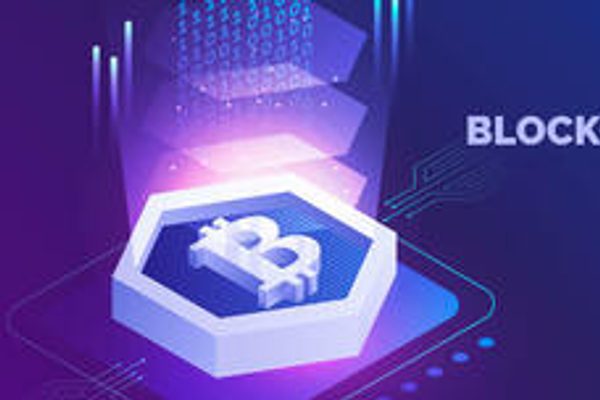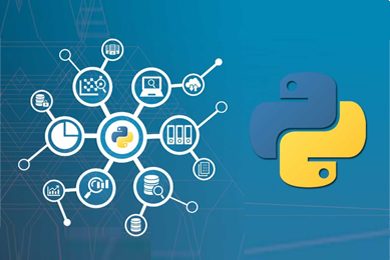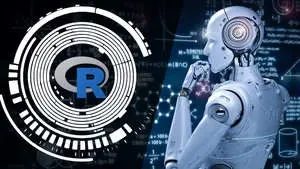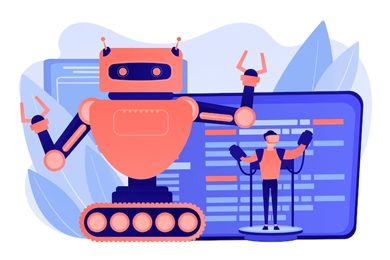This plan includes
- Limited free courses access
- Play & Pause Course Videos
- Video Recorded Lectures
- Learn on Mobile/PC/Tablet
- Quizzes and Real Projects
- Lifetime Course Certificate
- Email & Chat Support
What you'll learn?
- Deep Learning and Convolutional Neural Networks using Python for Beginners.
Course Overview
Pre-requisites
- A medium configuration computer and the willingness to indulge in the world of Deep Learning.
Target Audience
- Beginners who are interested in Deep Learning using Python.
Curriculum 45 Lectures 06:17:24
Section 1 : Course Intro and Table of Contents.
- Lecture 2 :
- Course Intro and Table of Contents - Short.
Section 2 : Deep Learning Overview.
- Lecture 1 :
- Deep Learning Overview - Part 1
- Lecture 2 :
- Deep Learning Overview - Part 2
Section 3 : Chosing ML or DL for your project.
- Lecture 1 :
- Chosing ML or DL for your project.
Section 4 : Chosing ML or DL for your project.
- Lecture 1 :
- Chosing ML or DL for your project.-Part 1
- Lecture 2 :
- Chosing ML or DL for your project.-Part 2
Section 5 : Python Basics .
- Lecture 1 :
- Python Basics - Assignment.
- Lecture 2 :
- Python Basics - Flow Control.
- Lecture 3 :
- Python Basics - Data Structures.
Section 6 : Installing Theano Library and Sample Program to Test - New.
- Lecture 1 :
- Installing Theano Library and Sample Program to Test - New.
Section 7 : TensorFlow library Installation and Sample Program to Test.
- Lecture 1 :
- TensorFlow library Installation and Sample Program to Test.
- Lecture 2 :
- Keras Installation and Switching Theano and TensorFlow Backends
Section 8 : Multi-Layer Perceptron Concepts.
- Lecture 1 :
- Multi-Layer Perceptron Concepts.
Section 9 : Pima Indian Model.
- Lecture 1 :
- Pima Indian Model - Steps Explained - Part 1
- Lecture 2 :
- Pima Indian Model - Steps Explained - Part 2
- Lecture 3 :
- Pima Indian Model Coding - Part 1
- Lecture 4 :
- Pima Indian Model - Perfomance Evaluation - Manual Verification.
Section 10 : Developing the Iris Flower Model.
- Lecture 1 :
- Developing the Iris Flower Model - Part 1
- Lecture 2 :
- Developing the Iris Flower Model - Part 2
Section 11 : Understanding the Sonar Returns Dataset.
- Lecture 1 :
- Understanding the Sonar Returns Dataset.
Section 12 : Sonar Model Perfomance Improvement - Layer Tuning For Larger Network.
- Lecture 1 :
- Sonar Model Perfomance Improvement - Layer Tuning For Larger Network.
Section 13 : Understanding the Boston Housing Dataset.
- Lecture 1 :
- Understanding the Boston Housing Dataset.
Section 14 : Boston Performance Improvement.
- Lecture 1 :
- Boston Performance Improvement by Standardization.
- Lecture 2 :
- Boston Performance Improvement by Deeper Network Tuning.
Section 15 : Load and Predict using the Pima Indian Model.
- Lecture 1 :
- Load and Predict using the Pima Indian Model.
Section 16 : Save Load and Predict using.
- Lecture 1 :
- Save Load and Predict using Iris Flower Dataset.
- Lecture 2 :
- Save Load and Predict using Boston Dataset.
Section 17 : Checkpointing Introduction.
- Lecture 1 :
- Checkpointing Introduction.
Section 18 : Checkpoint Neural Network Model Improvements.
- Lecture 1 :
- Checkpoint Neural Network Model Improvements.
Section 19 : Loading Saved Checkpoints.
- Lecture 1 :
- Loading Saved Checkpoints.
Section 20 : Learning Rate Schedule Coding.
- Lecture 1 :
- Learning Rate Schedule Coding.
Section 21 : Drop Based Learning Rate Schedule - Part 2
- Lecture 1 :
- Drop Based Learning Rate Schedule - Part 2
Section 22 : Convolutional Neural Networks - Introduction - Part 2
- Lecture 1 :
- Convolutional Neural Networks - Introduction - Part 2
Section 23 : Downloading the MNIST Handwritten Digit Dataset.
- Lecture 1 :
- Downloading the MNIST Handwritten Digit Dataset.
Section 24 : Multi Layer Perceptron Model using MNIST.
- Lecture 1 :
- Multi Layer Perceptron Model using MNIST.
- Lecture 2 :
- Multi Layer Perceptron Model using MNIST - Part 2
Section 25 : Convolutional Neural Network Model using MNIST.
- Lecture 1 :
- Convolutional Neural Network Model using MNIST.
- Lecture 2 :
- Convolutional Neural Network Model using MNIST- Part 2
Section 26 : Large CNN using MNIST.
- Lecture 1 :
- Large CNN using MNIST.
Section 27 : Introduction to Image Augmentation using Keras.
- Lecture 1 :
- Introduction to Image Augmentation using Keras.
Section 28 : Saving Augmentation for MNIST.
- Lecture 1 :
- Saving Augmentation for MNIST.
Section 29 : Simple CNN using CIFAR-10 Dataset.
- Lecture 1 :
- Simple CNN using CIFAR-10 Dataset - Part 2
- Lecture 2 :
- Simple CNN using CIFAR-10 Dataset - Coding.
Section 30 : Load and Predict using CIFAR-10 CNN Model.
- Lecture 1 :
- Load and Predict using CIFAR-10 CNN Model.
Our learners work at
Frequently Asked Questions
How do i access the course after purchase?
It's simple. When you sign up, you'll immediately have unlimited viewing of thousands of expert courses, paths to guide your learning, tools to measure your skills and hands-on resources like exercise files. There’s no limit on what you can learn and you can cancel at any time.Are these video based online self-learning courses?
Yes. All of the courses comes with online video based lectures created by certified instructors. Instructors have crafted these courses with a blend of high quality interactive videos, lectures, quizzes & real world projects to give you an indepth knowledge about the topic.Can i play & pause the course as per my convenience?
Yes absolutely & thats one of the advantage of self-paced courses. You can anytime pause or resume the course & come back & forth from one lecture to another lecture, play the videos mulitple times & so on.How do i contact the instructor for any doubts or questions?
Most of these courses have general questions & answers already covered within the course lectures. However, if you need any further help from the instructor, you can use the inbuilt Chat with Instructor option to send a message to an instructor & they will reply you within 24 hours. You can ask as many questions as you want.Do i need a pc to access the course or can i do it on mobile & tablet as well?
Brilliant question? Isn't it? You can access the courses on any device like PC, Mobile, Tablet & even on a smart tv. For mobile & a tablet you can download the Learnfly android or an iOS app. If mobile app is not available in your country, you can access the course directly by visting our website, its fully mobile friendly.Do i get any certificate for the courses?
Yes. Once you complete any course on our platform along with provided assessments by the instructor, you will be eligble to get certificate of course completion.
For how long can i access my course on the platform?
You require an active subscription to access courses on our platform. If your subscription is active, you can access any course on our platform with no restrictions.Is there any free trial?
Currently, we do not offer any free trial.Can i cancel anytime?
Yes, you can cancel your subscription at any time. Your subscription will auto-renew until you cancel, but why would you want to?
Instructor

286717 Course Views
19 Courses



 Tech & IT
Tech & IT
 Business
Business
 Coding & Developer
Coding & Developer
 Finance & Accounting
Finance & Accounting
 Academics
Academics
 Office Applications
Office Applications
 Art & Design
Art & Design
 Marketing
Marketing
 Health & Wellness
Health & Wellness
 Sounds & Music
Sounds & Music
 Lifestyle
Lifestyle
 Photography
Photography


























